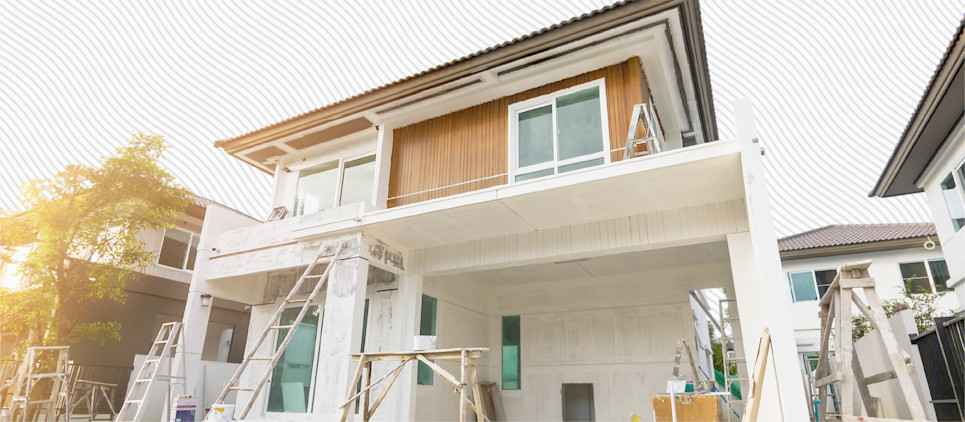Breaking down the BRRRR method for real estate Investing
BRRRR is an investing strategy that stands for “Buy, Rehab, Rent, Refinance, Repeat.” This method targets distressed properties and off market properties properties such as foreclosures or homes up for auction. The idea is to snag properties at a low price, flip them into rental properties, and quickly refinance to fund another purchase.

Table of contents
Understanding BRRRR—and what it entailsHow to finance a BRRRR investmentUnderstanding BRRRR—and what it entails
The BRRRR steps—buy, rehab, rent, refinance, repeat—should be completed in sequential order to be an effective investment strategy. Here’s a breakdown of what each step entails:
Buy
The goal is simple: buy an inexpensive property to rehabilitate it. To determine if the BRRRR method will work for the property, do the math to ensure the purchase price (including closing costs) can cover your expenses to rehabilitate. Calculating ARV (after repair value) is helpful here.
Rehab
Rehabbing a property and renovating it are different things. Rehabbing means restoring the property to its original state. Think: all the basics of a pleasant rental but without many high-end finishes or optional features. Renovating means renewing it, which might include upgrades like additional amenities.
When rehabbing the property, assess how to make it functional and livable. Most real estate investors who follow the BRRRR method consider renovations only if the value the renovations add justifies charging a higher monthly rent. Some examples of high-return renovations include updated kitchens and bathrooms, and bedroom additions.
Rent
Once rehabbed, it’s time to rent out the property. The rental income will enable you to pay the mortgage, potentially at a month-over-month profit, and build equity that you will use in the next step (refinance). Setting the right rental price for the market (and filling it with high quality tenants) is key to your success with the BRRRR method.
Determine rent. When determining how much rent to charge, consider how much income you need to cover your purchase and rehab costs, as well as what rental amount your local market supports. The 1% rule is a quick way to figure out if an investment property is going to provide you with the monthly cash flow you need to consider it a good investment.
Find tenants. The long-term relationship you will embark upon with a new tenant may last for years. Carefully reviewing rental applications and checking references and credit scores before you sign a lease is essential. When searching for tenants, you’ll need to list your property, market and show, screen potential tenants, and run background checks.
Property management. If you are solely interested in acquiring passive income from your investment, you may choose to delegate routine operations to a property management company. They can handle all landlord responsibilities if you’re not up to the task, or simply don’t have time.
Refinance
Once you have built a substantial amount of equity in the property, you can refinance it and put your cash savings and equity toward buying another distressed property. Be sure to take note of the mandatory seasoning period, which is the amount of time you must own the property before the lender considers refinancing against its appraised value.
Some banks might extend a cash-out refinance offer. Others might opt to pay off outstanding debt. A cash-out refinance is ideal because it enables you to buy another property with cash. But first you need to locate a lender who offers one—and you’ll need to meet the qualifications required for it.
Repeat
This is exactly what the word suggests—repeat the process above to buy more properties. You can utilize the cash-out refinance or apply equity from their initial property to buy and rehab the next one.

How to finance a BRRRR investment
One challenging aspect for beginner BRRRR investors is determining which investment properties will deliver the best ROI, and how to cover initial purchase price and rehab costs. If you don’t have the cash on hand to finance the property purchase or rehab it, there are other ways to finance.
Conventional bank loans. The majority of banks require a minimum of 20-25% money down—others may require more. They may offer cash out, or only pay debt. Conventional banks base the amount they will let you borrow on the property’s purchase price, which can mean low loan amounts since the BRRRR intentionally seeks out inexpensive properties.
Local bank loans. Provide greater flexibility on rental property lending with mortgage limits and debt-to-income ratio issues. The down payment will be in the same range as conventional bank loans, plus, they may also allow the loan to cover rehab costs.
Private lenders. These are funds you receive through people you know. That could mean business partners, family, friends, or additional investors, so rates can alter depending on your lender relationship or the property. Private lenders may also allow the loan to cover rehab costs.
Hard money lenders. Sometimes, short-term loans are sourced outside of traditional lenders. They come from private companies or individuals known as hard money lenders who accept personal property or other assets as collateral.
Pros and cons of the BRRRR method
Every investing strategy comes with benefits as well as risks—the BRRRR method included.
Potential pros
Good return on investment. When you buy a fixer-upper for a relatively small sum, fix it up, and rent it out, you may be in a good position to achieve a positive cash flow.
Passive income source. Once you have reached the rent step of BRRRR, you will start earning passive income via the rent you collect.
Achieve economies of scale. Once you’ve mastered the BRRR method and built a collection of investment properties, you’ll reach economies of scale. At that point, owning and operating numerous rental properties will lower your overall expenses and reduce your risk.
Potential cons
Costly loans. If you opt to make use of a short-term or hard money loan, be prepared for high interest rates. This is especially true during the rehab step if you need additional loans to cover expensive repairs and improvements while the property isn’t generating income yet.
Rehab regret. Rehab projects on distressed homes can become unruly due to unexpected expenses and issues, difficult timelines, and managing contractors.
May not be worth the wait. The BRRRR method includes at least two waiting periods—the rehab phase and the seasoning. Make sure you have enough cash on hand to handle both.
Appraisal risk. Lenders predominantly refinance a property based on its appraisal, not on the money put into it to rehab. That means there is a risk the property valuation will be lower than you anticipated.
Bungalow is the best way to invest and manage your real estate portfolio. We work with you to identify, purchase, fill, and manage residential properties—so that you can enjoy up to 20% more in rental income with a lot less stress. Learn more about Bungalow.
Ready to find your next home?
Move-in ready homes and a built-in community so you can feel at home, together — wherever you are.
Suggested articles



